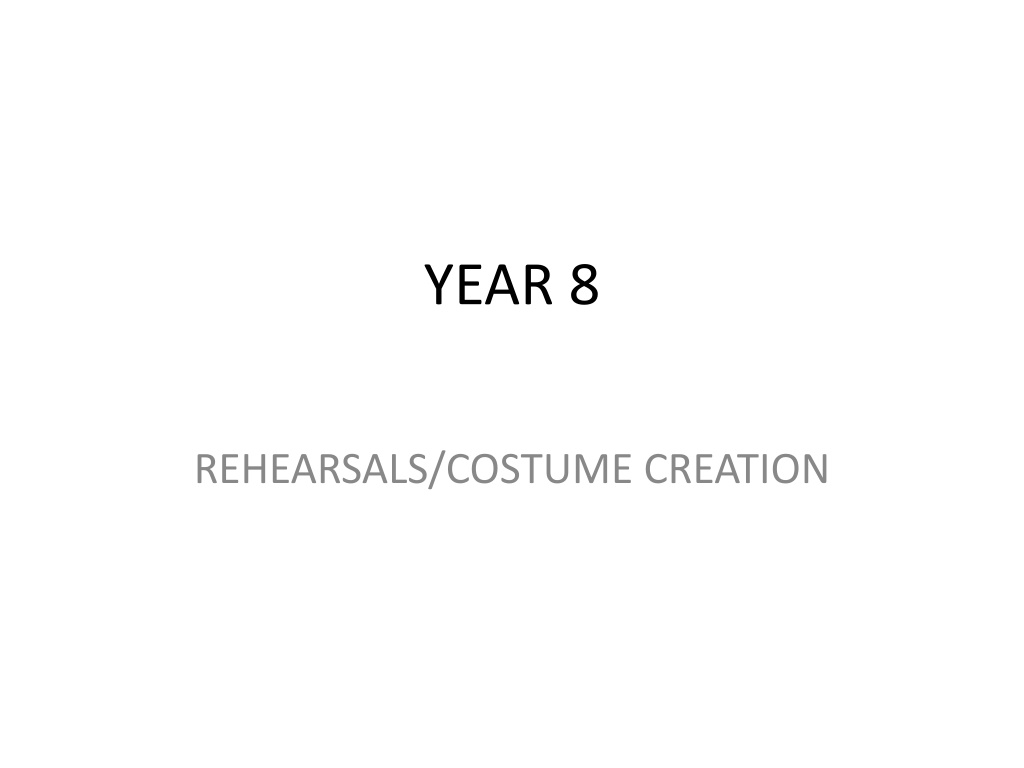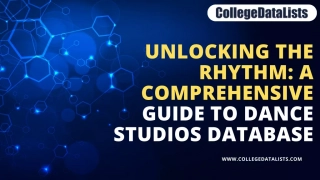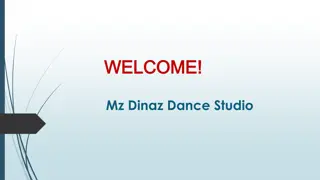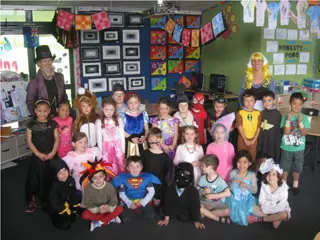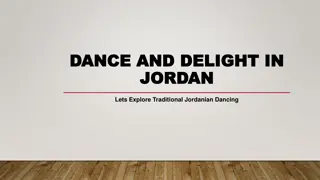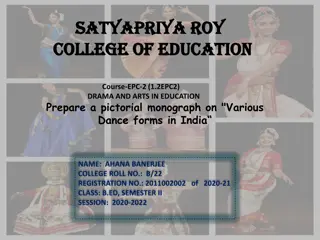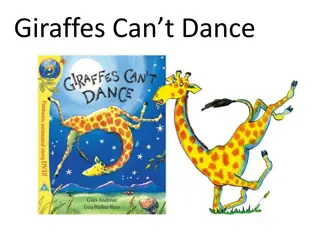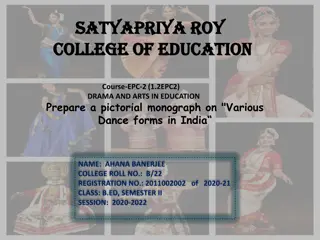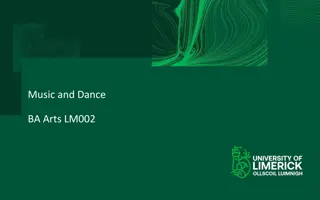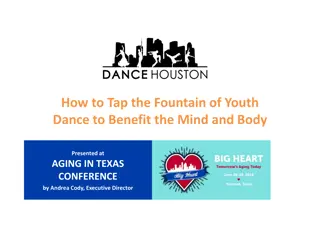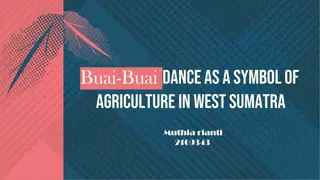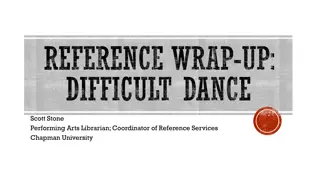The Creative World of Costumes and Dance
Delve into the captivating realm of costume creation and dance forms with insights on defining and making costumes, understanding the functions of costumes in performances, exploring different types of dance like ballet and tap, and reflecting on the importance of costumes in drama. Uncover the steps involved in crafting a costume and discover the role of costumes in portraying historical periods.
Uploaded on Oct 03, 2024 | 0 Views
Download Presentation

Please find below an Image/Link to download the presentation.
The content on the website is provided AS IS for your information and personal use only. It may not be sold, licensed, or shared on other websites without obtaining consent from the author.If you encounter any issues during the download, it is possible that the publisher has removed the file from their server.
You are allowed to download the files provided on this website for personal or commercial use, subject to the condition that they are used lawfully. All files are the property of their respective owners.
The content on the website is provided AS IS for your information and personal use only. It may not be sold, licensed, or shared on other websites without obtaining consent from the author.
E N D
Presentation Transcript
YEAR 8 REHEARSALS/COSTUME CREATION
OBJECTIVES By the end of the lesson, the students should be able to; - define costume - explian the functions of costume - list the steps to follow in making a costume
COSTUME It includes all characters garment and accessories, such as purse, jewelry, handkerchief, bag, all items related to hair dressing and everything associated with face and body make-up including masks.
FUNCTIONS OF COSTUME Costume helps to show the historical period of a play Through Costume, an audience can easily say/predict that the story is talking about people of the nineteen nineties.
COSTUME CREATION This entails the steps to follow in making a costume for a particular event or drama. STEP 1.) Start collecting cardboard boxes and tubes now 2.) Select a kind of costume: This is possibly the most vital part of creation your costume but sometimes it is also the hardest.
3.) Look around for parts of your costume 4.) Plan your costume 5.) Select your base costume item. 6.) Buy the rest of your stuff too 7.)Make your costume 8.) Test out your costume before the day 9.) Keep looking for props even when you think your costume is complete.
Evaluation 1 What is the difference between costume and make-up in drama? Explain the need for costume in drama.
TYPES OF DANCE BALLET DANCE: Ballet is a poised style of dance and it is the basis of many other forms. Ballet shoes are worn until the dancers feet have developed enough strength to progress into pointe shoes. TAP DANCE: Tap is best described as "musical feet". Tap is a form of dance where dancers use their feet as percussive instruments. They wear shoes specially designed with metal plates on the toe and heel.
JAZZ: Jazz embodies many aspects of dance. It has been influenced by ballet, modern, tap, hip-hop, African dance and many more styles. MODERN DANCE: Modern dance focuses on the dancers strong relationship with the floor, concepts of contraction & release and the connectivity of breath and , movement. LYRICAL: The basis of lyrical is ballet but also encompasses both jazz and modern.
HIP HOP: Hip Hop is an urban dance style also known as Street Dance. CONTEMPORARY: Contemporary dance embodies ballet, modern, jazz and lyrical. It uses technique such as ballet as its fundamentals and creates many more greater movements that do not adhere to the strict rules of ballet and modern. HIGHLAND DANCE: Highland dancing requires a lot of stamina , as well as arm and leg strength.
LINE DANCE: Line Dancing is a social dance that is made up of a sequence of steps that is repeated IRISH DANCE: Irish dancing originated from Ireland and can be divided into performance and social dances.
EVALUATION 2 What is dance Mention ten types of dance Why do people choose dance as a career?
